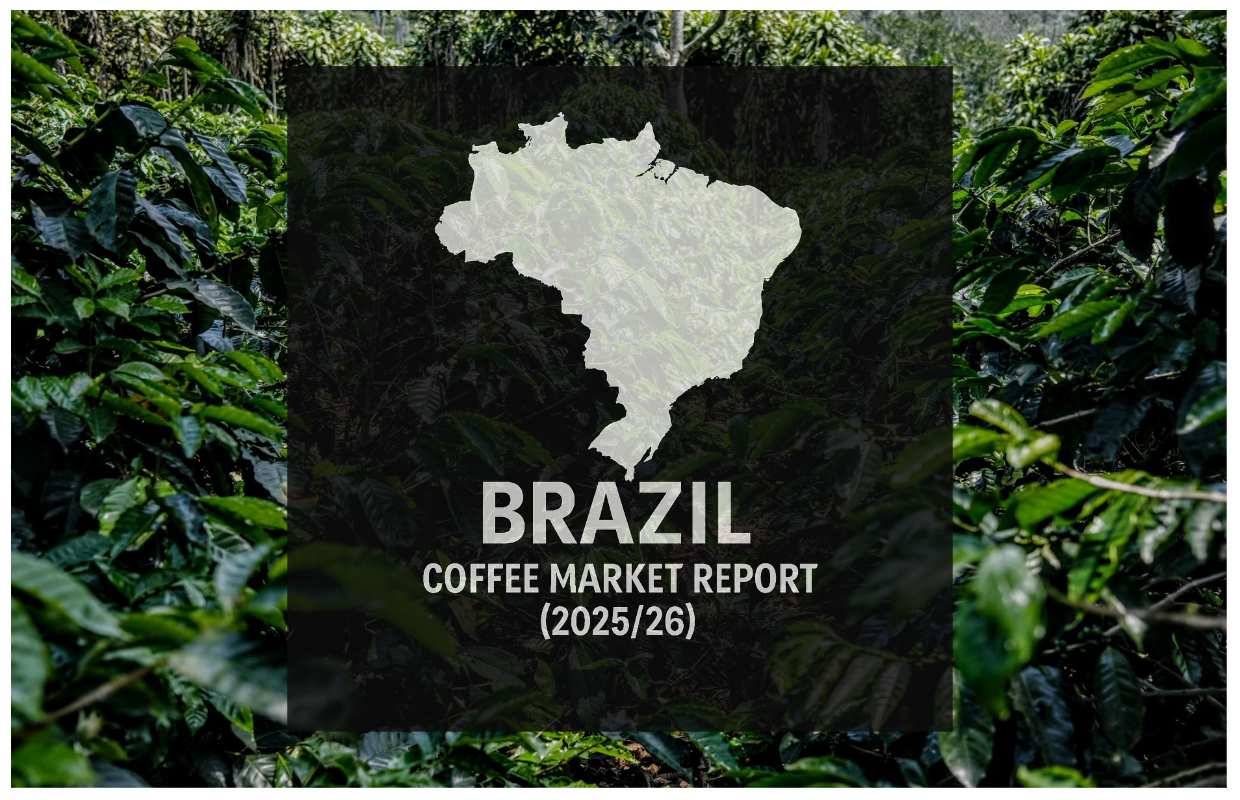Brazil’s total coffee production for the 2025/26 market year (July to June) is forecast at the equivalent of 65 million 60-kilogram bags, up 0.5% from the prior year. This modest gain is driven by a projected 15% increase in robusta output, which is expected to offset a 6.4% decline in arabica production, according to the latest USDA estimates.
Unfavorable weather and the off-year of Brazil’s biennial arabica cycle have slowed yield recovery in the key growing states of Minas Gerais and São Paulo.
Total exports are forecast to fall to 41.75 million bags, a 5.6% drop from the previous year. High global prices and competition from resurgent producers like Vietnam and Indonesia are affecting trade, though export revenues remain strong due to overall tight global supply. Brazil is expected to maintain its dominance in both green and soluble coffee exports, with record revenue projected for 2025.
Domestic consumption is forecast at 22.28 million bags, with a slight recovery from last year driven by population growth, though high retail prices continue to limit per capita demand.
These and other predictions are outlined in the latest USDA Foreign Agricultural Service annual report on the Brazil coffee sector.
[Note: This is part of a series of DCN stories that will explore USDA FAS annual coffee reports. The information agency typically delivers more than a dozen country-level reports on the coffee sector, each coming from different authors and field offices.]
📉 Export Outlook
-
Total exports for 2025/26 are forecast at 41.75 million bags, down from 44.25 million in 2024/25.
-
Export volume fell in early 2025 due to low stocks and logistical delays, but revenue rose 54%, reaching $3.89 billion from January to March 2025.
-
The top export markets in 2024 were: the United States (15%), Germany (14%), Italy (7%), Belgium (6%) and Japan (6%).
-
Soluble exports reached 977,600 bags in Q1 2025, led by spray-dried coffee (71.5% of total), with the U.S. accounting for nearly 20% of soluble exports.
-
Brazilian exporters may benefit from new U.S. tariffs on other major coffee-producing countries. While Brazil faces a 10% tariff, Vietnam and Indonesia face 46% and 32%, respectively.
🌱 Production and Growing Conditions
-
Total production for 2025/26 is forecast at 65 million bags, with arabica representing 40.9 million bags and robusta representing 24.1 million.
-
Arabica crops in Minas Gerais and São Paulo have been affected by drought, heat and irregular rainfall, reducing flowering and bean formation. However, robusta crops thrived in Espírito Santo and Bahia due to consistent rain and widespread use of irrigation.
-
Espírito Santo alone accounts for 70% of Brazil’s robusta, with significant investments in mechanization and irrigation.
-
Producers are adopting adaptation strategies, such as intercropping, shade planting, “sunscreen” foliar sprays and replacing old trees with heat-tolerant cultivars.
☕ Domestic Consumption
-
Total consumption for 2025/26 is forecast at 22.28 million bags, with roasted/ground coffee representing 21.3 million bags and soluble representing 980,000 bags.
-
Per capita consumption dropped 2% to 5.01 kilograms due to inflation and higher retail prices, despite total consumption increasing to 21.9 million bags.
🏷️ Prices, Imports and Stocks
-
Arabica prices averaged $430 per 60-kilogram bag in April 2025, up 108% year-over-year.
-
Robusta prices averaged $288.79, up 55% from the previous year.
-
Gross coffee revenue in 2025 is projected to hit $21.6 billion, up 57% from 2024, with arabica accounting for $14.76 billion and robusta accounting for $6.17 billion.
-
Coffee revenue by region is as follows: Minas Gerais ($10.74 billion); Espírito Santo ($5.27 billion); São Paulo ($2.09 billion); Bahia ($1.67 billion); Rondônia ($1.01 billion); Paraná ($304 million).
-
Ending stocks are forecast at 1.68 million bags, recovering from a low of 640,000 in 2024/25.
-
Brazil lost $257.7 million in export value in one month due to port delays and unshipped containers.
-
Imports remain negligible, mostly small volumes of roasted coffee from Switzerland, France and Italy.
🏛️ Policy and Infrastructure
-
The Brazilian coffee support fund FUNCAFE distribution for 2024/25 totals $1.17 billion, supporting crop management, marketing, recovery and working capital.
-
Brazil passed a tax reform in 2024 creating a value-added tax system, with food staples like coffee exempted beginning 2026.
-
The government plans $800 million in 2025 investments in roads and ports to improve logistics for agriculture exports.
For detailed trade data and historical comparisons, see the full USDA Coffee Annual Report for Brazil (May 2025).
Comments? Questions? News to share? Contact DCN’s editors here. For all the latest coffee industry news, subscribe to the DCN newsletter.







Comment